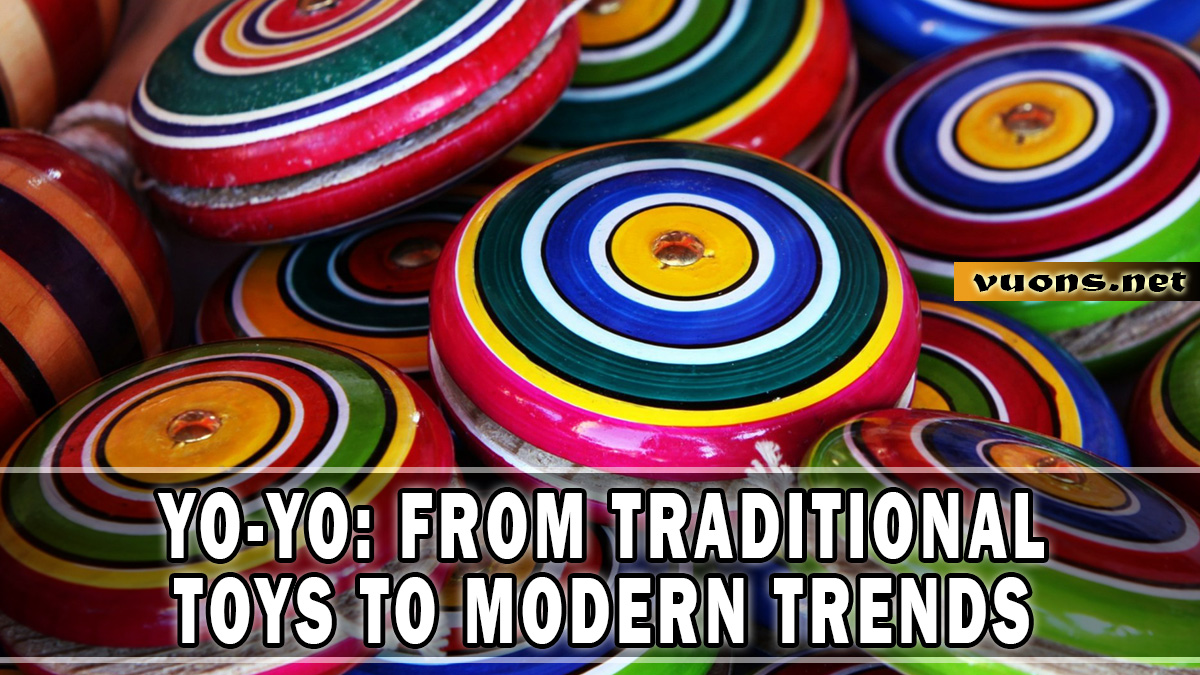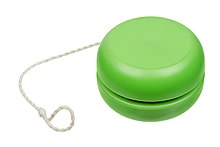History and Development of the Yo-Yo Game
The Origin of the Yo-Yo Game
The history of the Yo-Yo is believed to begin in ancient Greece around 500 BC. The oldest evidence in the form of a picture of a child holding a Yo-Yo was found on antique vases. In those days, Yo-Yos were made from materials such as wood, metal, and clay. Yo-Yo is also found in Filipino Culture, where it is called “bandalore” or “ring”.
In the Philippines, Yo-Yo has a deeper meaning. The word “yo-yo” in the local language means “back”. Initially, the Yo-Yo was used as a hunting weapon tied to a long string, not just as a toy. The tradition of using the Yo-Yo was then brought to the United States by Filipino immigrants in the early 20th century.
The popularity of the Yo-Yo as a modern toy began to grow in 1928 when an entrepreneur named Pedro Flores, who was an immigrant from the Philippines, opened the Yo-Yo company in California. Flores’ Yo-Yo has a simpler and more efficient design with a string that can be tied to an axle, allowing the Yo-Yo to “sleep” on the end of the string. This technique makes Yo-Yo even more interesting to play and allows for more complex tricks.
In 1932, Donald F. Duncan, an American toy entrepreneur, purchased the Yo-Yo patent rights from Flores and founded the Yo-Yo Duncan company. Duncan then popularized Yo-Yo throughout the world through various competitions and demonstrations. Yo-Yo became one of the most popular toys in the United States and then spread to various countries.
Until now, Yo-Yo remains a toy that is popular with various groups. With a variety of design innovations and gaming techniques, Yo-Yo continues to evolve as a fun and challenging form of entertainment, combining a rich history with modern excitement.
Yo-Yo Evolution from Time to Time
In the early 20th century, Yo-Yo became widely known in the United States when Pedro Flores, a Filipino immigrant, popularized it. Flores founded the Yo-Yo company in California in 1928, introducing a more modern Yo-Yo design with a string that could be attached to an axle. This design allows the Yo-Yo to “sleep” on the end of its string, opening up opportunities for more complex tricks.1932 marked an important point in the evolution of the Yo-Yo when Donald F. Duncan purchased the patent rights from Flores. Duncan later popularized the Yo-Yo through various competitions and demonstrations, making it one of the most popular toys in the United States. In 1946, Duncan introduced the plastic Yo-Yo, replacing the wood and metal previously used. Plastic allows for cheaper mass production and a wider variety of designs.
In the 1980s and 1990s, Yo-Yos experienced a resurgence in popularity with the emergence of various design innovations, such as Yo-Yos with ball bearings and modern response systems. These innovations allowed players to perform more complex and spectacular tricks. In addition, international Yo-Yo communities began to form, with competitions and world championships bringing together talented players from all over the world.
To this day, Yo-Yo continues to develop with new technology and designs that utilize advanced materials and modern manufacturing techniques. From simple hunting tools to sophisticated toys that challenge skills, the evolution of the Yo-Yo reflects the creativity and innovation that continues to develop over time.
Yo-Yo Competitions and Championships
Since the early 1980s, Yo-Yo competitions have become a very popular event. The Duncan Yo-Yo Company was one of the first to organize national championships in the United States, which were later followed by world championships. In 1992, the International Yo-Yo Federation (IYYF) was founded to coordinate and organize Yo-Yo competitions worldwide.
The Yo-Yo Championships feature a variety of competition categories, including freestyle, ladder sport, and technical. Freestyle is the most popular category where participants perform their tricks with background music, expressing their creativity and technical skills. Sport ladder is a category in which participants take part in a defined series of tricks with increasing levels of difficulty. Meanwhile, technical, assesses the accuracy and complexity of technical movements in controlling the Yo-Yo.
Participants from various countries compete for the title and recognition as the best Yo-Yo in the world. Yo-Yo world championships are held annually in various age and skill categories, from beginners to professionals. Players who succeed in competitions are often recognized as skilled Yo-Yo athletes and rewarded in the form of prizes and prestige.
Apart from being a competition event, the Yo-Yo championship is also an opportunity to share knowledge, techniques and create bonds within the global Yo-Yo community. Through this competition, Yo-Yo becomes not just a toy, but also a tool to build skills, creativity and a healthy spirit of competition among Yo-Yo fans around the world.
Famous Figures in the Yo-Yo World
Here are some famous figures in the Yo-Yo world who have made major contributions to the growth and popularity of this toy:
- Donald F. Duncan: As the founder of the Duncan Yo-Yo Company, Duncan not only took over the Yo-Yo patent rights from Pedro Flores in 1932, but also brought Yo-Yo to the world stage with numerous innovations and successful marketing campaigns.
- Pedro Flores: An immigrant from the Philippines, Flores was the first person to popularize the Yo-Yo in the United States. He founded the first Yo-Yo company in California in 1928 and developed a modern design that allowed the Yo-Yo to “sleep” on the end of its string.
- Steve Brown: A respected Yo-Yo player and innovator in the world of Yo-Yo freestyle. Brown is known for his unique and creative playing style, as well as his contribution to developing new techniques in Yo-Yo freestyle.
- Shinya Kido: A world Yo-Yo champion from Japan who has dominated Yo-Yo competitions for years. Kido is known for his incredible speed and technical skill in playing the Yo-Yo, as well as his contribution to inspiring a new generation of Yo-Yo players.
- Hans Van Dan Elzen: A designer and innovator in the Yo-Yo world, Van Dan Elzen is known for creating several revolutionary Yo-Yo models, including Yo-Yos with ball bearings and modern response systems that improve performance and ease of use.
These figures were instrumental not only in developing Yo-Yo engineering and design, but also in building a solid and passionate global community in the art of Yo-Yo playing. Through their dedication, Yo-Yo has become not just a toy, but also a tool to express creativity, develop skills, and build camaraderie among Yo-Yo fans around the world.




